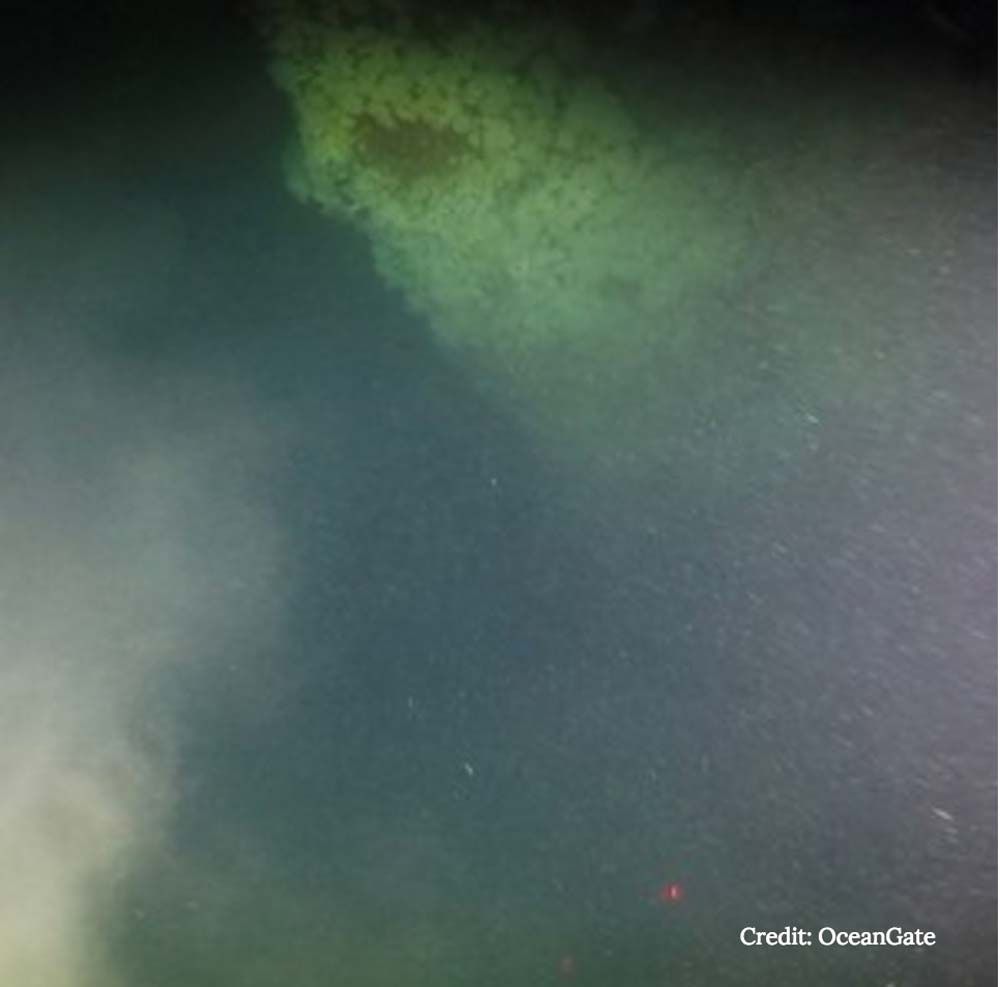Andrea Doria: Sub Reveals Images of the 'Mount Everest of Shipwrecks'

Detailed close-up sonar images of the legendary Andrea Doria shipwreck have been captured by a manned submersible for the first time since the ship sank 60 years ago.
The images, which are still being processed, show the wreck has decayed more than expected. A large section of the bow has broken off, suggesting that other parts of the ship are in a similar condition.
"When you look at the shape of the hull, it appears a lot has come off," Stockton Rush, chief executive officer of the ocean exploration company OceanGate, said at a press conference on Monday.
Lying in 240 feet of water, about 50 miles south of Nantucket, Mass., the Andrea Doria has been described as the "Mount Everest of wreck diving."
RELATED: Titanic Site Reveals Hints of Human Remains: Photos
Since the ship sank, 16 divers have lost their lives on scuba trips to the wreck. Indeed, the Doria presents many dangers even to the most experienced diver because of treacherous currents, sharks, wires and cables hanging like spider webs.
Identifiable landmarks have decayed over time, making it more difficult for scuba divers to safely navigate the wreck during their 20-minute dives.
Sign up for the Live Science daily newsletter now
Get the world’s most fascinating discoveries delivered straight to your inbox.
WATCH VIDEO: How Our Ocean Obsession Led to a One-Man Sub
OceanGate's team had planned to spend a week diving to the wreck site with Cyclops 1, a five-person submersible capable of diving to a depth of 1,640 feet.
But foggy conditions and rough seas cut the expedition short. Nevertheless, the team was still able to produce 17 individual sonar scans of the bow and surrounding debris field.
"We were able to view the Andrea Doria area for nearly four hours, which is more than 10 times longer than scuba divers can," Rush said.
RELATED: Dark Side of Costa Concordia in Photos
An icon of national pride for Italy and a floating art gallery, the Andrea Doria was the most beautiful ship of its time.
The ship had already crossed the Atlantic 100 times, plying the Genova-New York route, when it collided with the 13,000-ton Swedish liner Stockholm in the waters off Nantucket, some 100 nautical miles from New York Harbor.
Following the collision, it stayed afloat for 11 hours, and sank, with all its lights on, on July 26, 1956.
On board were 1,134 passengers, 572 crew members, 401 tons of cargo (including 1,000 Olivetti typewriters and 500 Necchi sewing machines), 522 pieces of baggage, 1,754 bags of mail and nine cars, including the Norseman, a special prototype car that was a joint project of Chrysler and Ghia. The car was valued at more than $100,000.
The Andrea Doria was under the command of 58-year-old Captain Piero Calamai, a decorated skipper who had spent 39 years at sea. Bound for Gothenburg in Sweden, the Stockholm was commanded by 63-year-old Captain Gunnar Nordenson, a veteran of 46 years at sea.
RELATED: Women and Children First? Not Anymore
At the moment of the collision, Nordenson was in his cabin and a young third mate, Johan-Ernst Carstens-Johannsen, was in charge of the bridge.
Incredibly, only 51 people died in the accident — five crew members of the Stockholm and 46 passengers of the Andrea Doria. Among them 43 died instantly when their cabins were obliterated.
In what is considered one of the greatest sea rescue in history, all the passengers who were alive after the collision were saved, as the Andrea Doria tilted helplessly and cold ocean water flooded into the gash at its side.
A later investigation by U.S. naval engineer John Carrothers came to the conclusion that Stockholm's Third Officer Carstens-Johannsen caused the crash by misreading his radar, assuming it was on the 15-mile-range scale (further away) when, in reality, the scale was at five miles.
In a study published in 1971 in the U.S. Naval Institute Proceedings, Carrothers explained that this was an easy mistake since the scale was not illuminated and there was no variable range indicator. A computer simulator at the U.S. Merchant Marine Academy has confirmed Carrothers' study.
The 697-foot-long ship has become one of the most popular — yet dangerous — wreck sites in the world, since it is dotted with relics and it is not protected, unlike other famous wrecks such as the Lusitania and the Titanic.
Silverware and china, along with two of the ship's three bells, have been recovered. While the stern bell was retrieved in the late 1980s, the bridge bell was recovered six years ago.
The forward bell might never be found since it stood in a part of the ship that has now collapsed.
OceanGate plans to continue its long-term study of the wreck and return to the site next year. The aim is to update the sonar mapping work and create a "virtual model" of the exterior of the wreck as well as its debris field.
The Washington-based company is currently developing the next-generation Cyclops 2 submersible, which will be capable of reaching depths of 13,000 feet.
"We're going to take mankind to the bottom of the ocean and discover things that no one can even imagine," Rush said.
Originally published on Discovery News.











